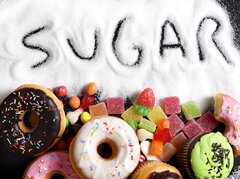Food and drink labels can help you to make informed nutritional choices between different products and should not carry misleading or false claims. The basic information required on food labels include: name of the product, list of ingredients, quantity of certain ingredients, net quantity, use by or best before dates, place of origin, special storage instructions, instructions for use, name and address of the manufacturer, packer or seller in the European Union, alcoholic strength of beverage with more than 1.2% alcohol.
Information on the legislations that govern food labelling in Ireland may be found on the Food and Safety Authority of Ireland website.
As part of its consumer education campaign, Safefood has a number of resource materials on its website, on food labelling aimed at school-aged children and the general public (How to read nutritional labels). Health professionals also have a role to play in raising people’s understanding of the nutritional claims on food labels which can be confusing, selective or prone to misinterpretation. For oral health, it is particularly important to educate the public on how to read and interpret the sugar content of products and be aware of hidden forms of sugar.
The terms “sugarless”, “sugar free”, “low sugar”, and “no added sugar” may only mean that there is no added sucrose in a product. The product may already contain sugars that can be listed as fructose, maltose, dextrose, glucose syrup, molasses, treacle, invert sugar, maltodextrins, maple syrup and honey – these can be cariogenic (cause tooth decay).
Nutrition information usually takes the form of a table which provides the amount of energy, protein, carbohydrate and fat per 100 g of product, and sometimes also per serving or pack. The information per serving is the most useful when comparing two foods. The sugar content of a product may be assessed by looking at the list of ingredients: the sooner sugar is mentioned on the list, the higher the sugar content of the product.
The following is a list of ingredients on a confectionary dessert label:
 Ingredients: water, fructose, milk chocolate, inulin - vegetable fibre, skimmed milk powder, fat reduced cocoa powder, dried whey, gelatine, hydrogenated vegetable oil, glucose syrup.
Ingredients: water, fructose, milk chocolate, inulin - vegetable fibre, skimmed milk powder, fat reduced cocoa powder, dried whey, gelatine, hydrogenated vegetable oil, glucose syrup.
Fructose is the second ingredient in the list and immediately signals that this product has a high sugar content. Sugar in the form of glucose syrup is also listed. What's not so evident is that milk chocolate and inulin also contain sugar. Thus, this product has a higher sugar content than is evident at first glance.
Did you know that:
A carbonated drink (Cola) contains 35 g of sugar per 330 ml can – 35 g of sugar is equivalent to 7 teaspoons or 11 cubes of sugar.A typical blackcurrant juice drink contains 70 g of sugar per 500 ml bottle – 70 g of sugar is equivalent to 14 teaspoons or 22 cubes of sugar (more sugar than contained in three standard packets of chewy sweets). To put this in perspective, a teenage boy aged between 11 and 14 should aim to eat no more than 65 g sugar in one day (13 teaspoons) and a teenage girl aged between 11 and 14 should aim to eat no more than 54 g sugar in one day (just under 11 teaspoons).